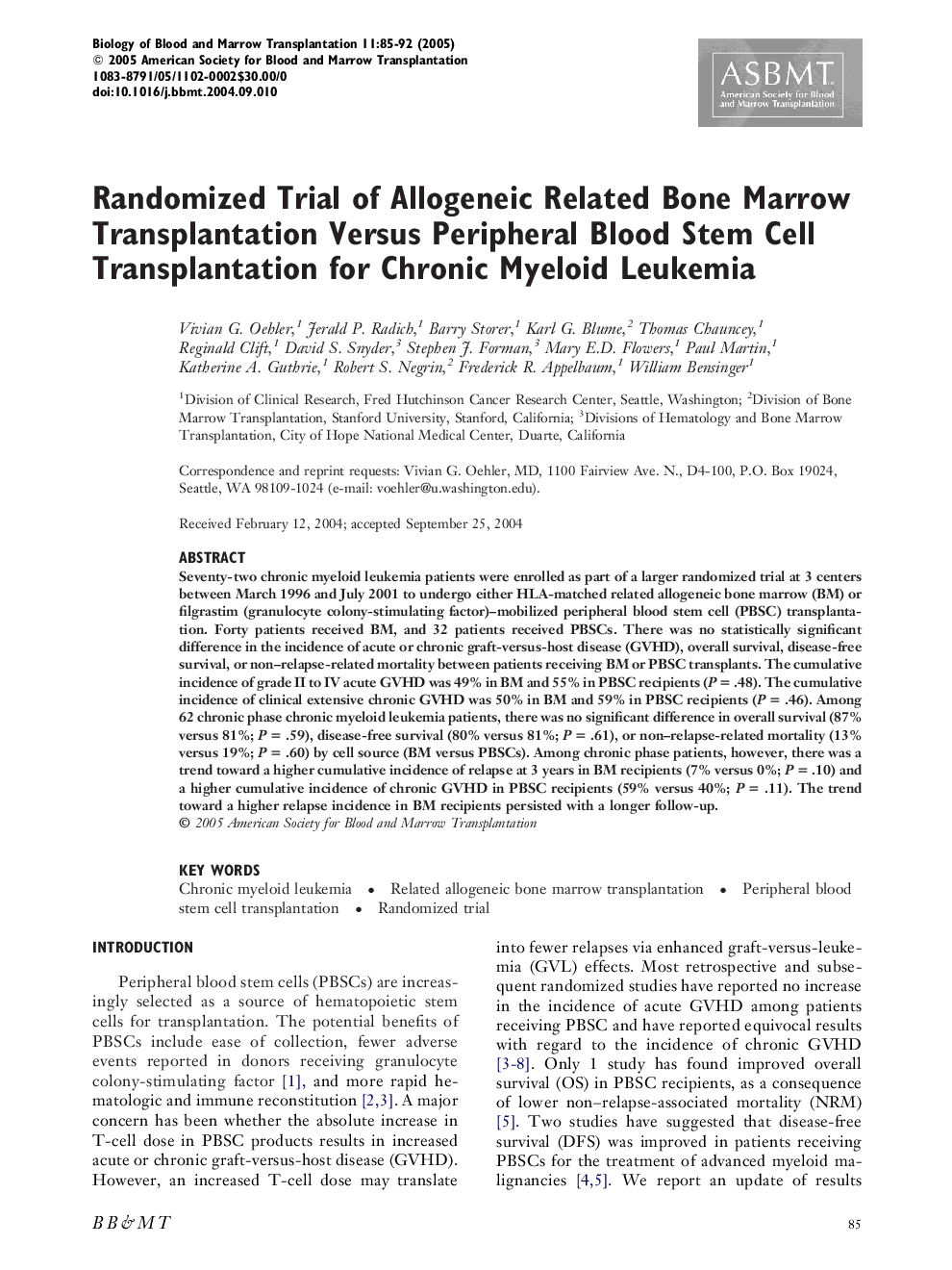| Article ID | Journal | Published Year | Pages | File Type |
|---|---|---|---|---|
| 9904263 | Biology of Blood and Marrow Transplantation | 2005 | 8 Pages |
Abstract
Seventy-two chronic myeloid leukemia patients were enrolled as part of a larger randomized trial at 3 centers between March 1996 and July 2001 to undergo either HLA-matched related allogeneic bone marrow (BM) or filgrastim (granulocyte colony-stimulating factor)-mobilized peripheral blood stem cell (PBSC) transplantation. Forty patients received BM, and 32 patients received PBSCs. There was no statistically significant difference in the incidence of acute or chronic graft-versus-host disease (GVHD), overall survival, disease-free survival, or non-relapse-related mortality between patients receiving BM or PBSC transplants. The cumulative incidence of grade II to IV acute GVHD was 49% in BM and 55% in PBSC recipients (P = .48). The cumulative incidence of clinical extensive chronic GVHD was 50% in BM and 59% in PBSC recipients (P = .46). Among 62 chronic phase chronic myeloid leukemia patients, there was no significant difference in overall survival (87% versus 81%; P = .59), disease-free survival (80% versus 81%; P = .61), or non-relapse-related mortality (13% versus 19%; P = .60) by cell source (BM versus PBSCs). Among chronic phase patients, however, there was a trend toward a higher cumulative incidence of relapse at 3 years in BM recipients (7% versus 0%; P = .10) and a higher cumulative incidence of chronic GVHD in PBSC recipients (59% versus 40%; P = .11). The trend toward a higher relapse incidence in BM recipients persisted with a longer follow-up.
Related Topics
Life Sciences
Biochemistry, Genetics and Molecular Biology
Cancer Research
Authors
Vivian G. Oehler, Jerald P. Radich, Barry Storer, Karl G. Blume, Thomas Chauncey, Reginald Clift, David S. Snyder, Stephen J. Forman, Mary E.D. Flowers, Paul Martin, Katherine A. Guthrie, Robert S. Negrin, Frederick R. Appelbaum, William Bensinger,
